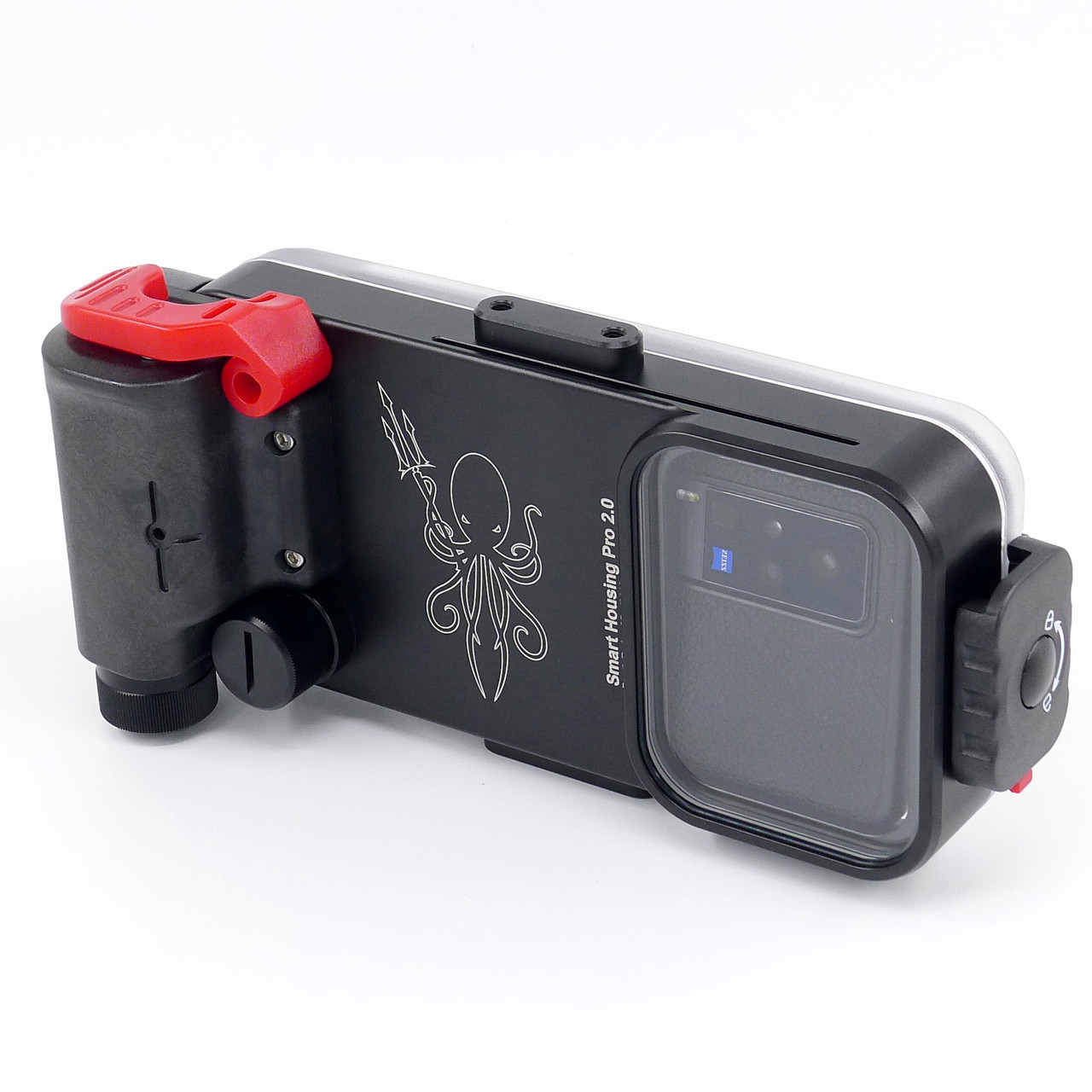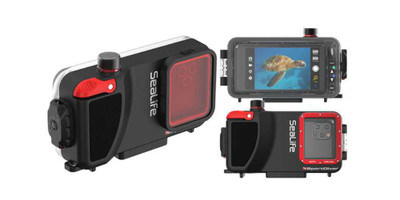Underwater Phone Housings: Pro and Cons
Posted by Dive Professional: William Taylor on on Nov 4th 2023
Scuba diving opens up an underwater world filled with vibrant life and uncharted territories. The ability to capture and share this experience has become an essential part of the adventure for many divers. While action cameras like the GoPro have long been favorites for underwater filming, the advent of scuba phone housings has introduced a compelling alternative. In this article, we will dive into the pros and cons of these housings, compare popular models, and discuss their benefits over traditional action cameras such as the GoPro.
Pros of Scuba Phone Housings
- Utilizing Existing Technology: Many divers already own smartphones with excellent camera capabilities. Scuba phone housings allow these individuals to maximize the use of their existing technology rather than purchasing a separate camera for underwater photography.
- High-Quality Cameras: Modern smartphones often come equipped with high-quality cameras that can capture images and videos at resolutions comparable to or exceeding those of dedicated underwater cameras.
- Connectivity Options: Smartphones offer instant connectivity options for sharing. Once you surface and have access to a network, it's easy to upload your underwater encounters to social media or cloud storage.
- Multifunctional Use: A smartphone within a scuba housing can still function as a dive computer, GPS unit, or even a backup light source, offering multifunctionality beyond just photography.
- Touchscreen Controls: Many phone housings allow for the use of touchscreen controls underwater, providing a user-friendly interface for those accustomed to smartphone operation.

Cons of Scuba Phone Housings
- Risk of Damage: Taking your smartphone underwater, even in a housing, always carries the risk of water damage. Any failure in the housing's seal can result in an expensive mishap but most insurance
- Battery Life Limitations: Smartphones are notorious for battery drainage, and using your phone as a camera and dive computer can deplete the battery quickly, potentially leaving you without a communication device post-dive.
- Limited Physical Controls: While touchscreen controls are convenient, they can be challenging to use with dive gloves or under the physical constraints of water pressure.
- Size and Handling: Phone housings can be bulky and may not provide the same ergonomic handling as dedicated underwater cameras or smaller action cams like the GoPro.
- Cost: High-quality housings can be quite expensive, and when combined with the cost of a high-end smartphone, the investment can surpass that of a GoPro.

Popular Models of Scuba Phone Housings
There are several notable models on the market that have captured the attention of divers. Let’s look at some of the most popular options:
- Kraken Sports Universal Smartphone Housing: This housing is compatible with a wide range of smartphone models. It is depth-rated to 263 feet (80 meters) and has an adjustable shim system to accommodate different phone sizes.
- SeaLife SportDiver Housing: The SeaLife SportDiver can house iPhones and most Android models up to 6.8 inches in length. It offers a large shutter lever and rear control buttons for ease of use.
- Nautismart Pro Housing: The Nautismart Pro is designed to fit most smartphones and is rated to 196 feet (60 meters). It has a double O-ring seal for extra protection against leaks.
- Divevolk SeaTouch 3 Pro: This housing boasts touch screen capability at depths up to 262 feet (80 meters) and is designed to fit a variety of smartphones.

Benefits Over the GoPro
When comparing scuba phone housings to the GoPro, several benefits come to the forefront:
- Screen Size: Smartphones generally have larger screens than the GoPro, providing a bigger viewfinder to frame shots and review footage underwater.
- Resolution and Camera Features: The latest smartphones have camera resolutions and features that can surpass those of a GoPro, such as better low-light performance and higher frame rates at certain resolutions.
- Editing and Sharing Capabilities: With a smartphone, you can edit and share your images and videos directly from the device without the need for transferring files to another device.
- Upgrade Path: As smartphone technology progresses, you can upgrade to a new phone and continue to use the same housing (provided it fits), whereas with a GoPro, upgrading often means buying a new model with its housing.
- Versatility: A smartphone in a dive housing can still function as a multi-purpose device, allowing you to use various apps designed for diving or underwater photography, which can add to the overall dive experience.
However, it is essential to note that while phone housings have their benefits, the GoPro and similar action cameras are designed specifically for rugged environments and have a long-established reputation for reliability and ease of use in action-packed situations. The GoPro’s compact size, robust design, wide-angle lens, and various mounts make it incredibly versatile for all kinds of adventure sports, not just diving.
In conclusion, scuba phone housings are an excellent option for divers looking to capture their underwater experiences without investing in additional camera equipment. The choice between a scuba phone housing and a GoPro comes down to personal preference, the type of diving you do, and the importance you place on image quality, versatility, and the convenience of sharing your adventures. Each has its advantages and limitations, and the best choice is the one that aligns with your specific needs and budget. As underwater imaging technology continues to evolve, we can expect to see further advancements in both scuba phone housings and action cameras, giving divers more options to document the wonders of the deep.

